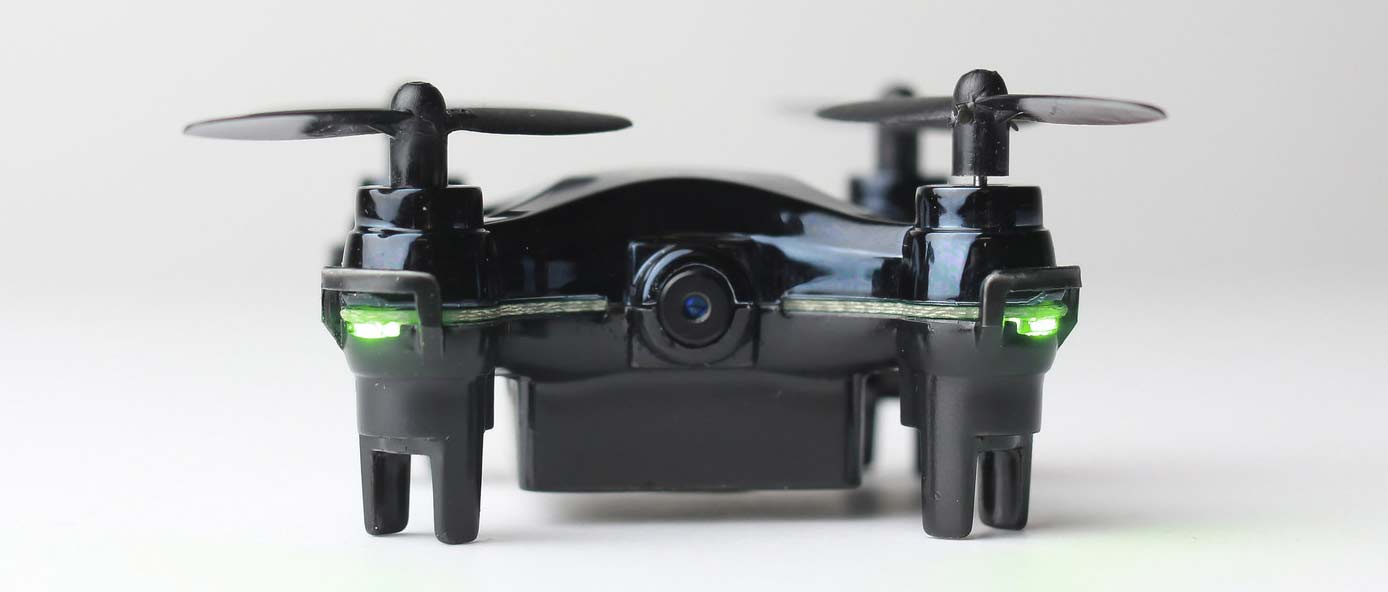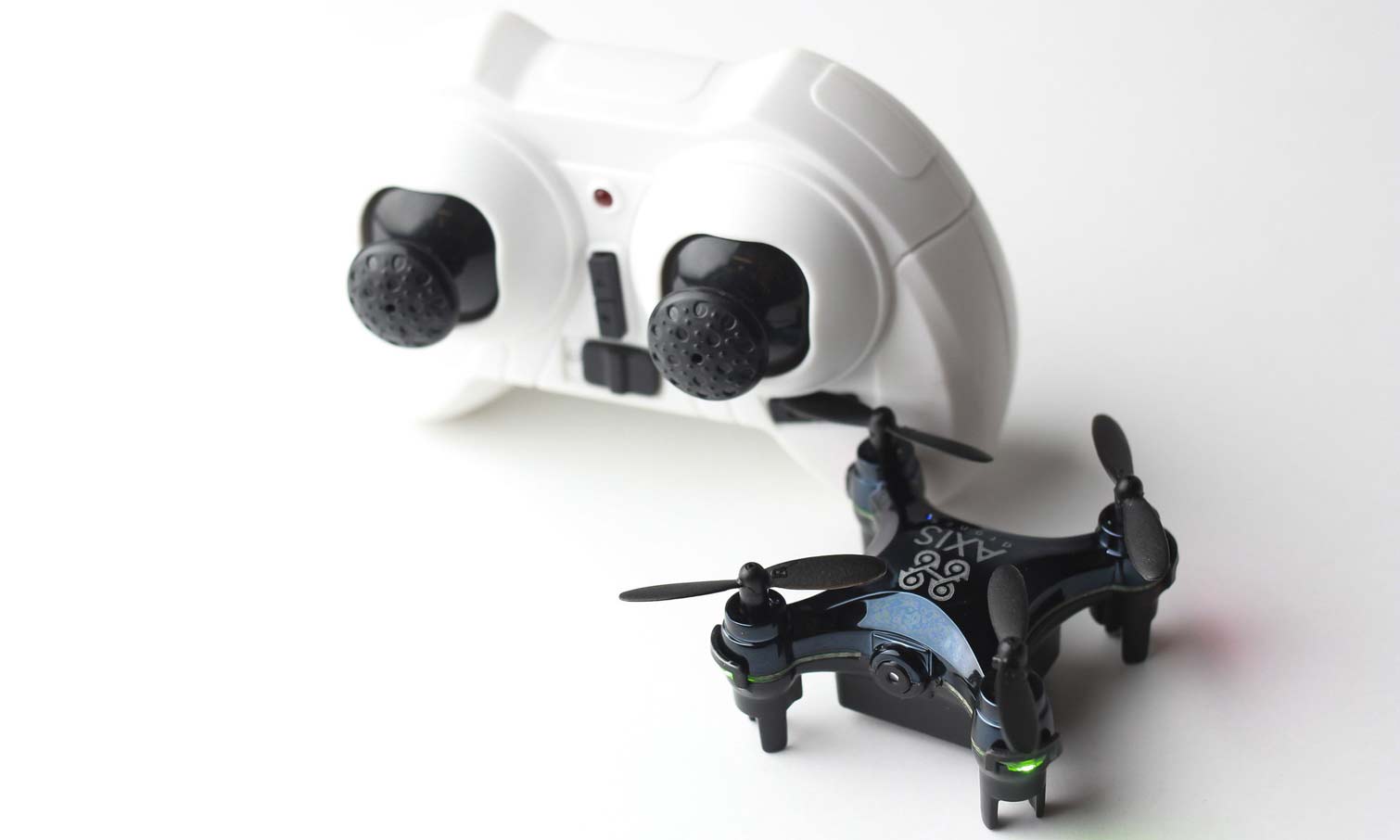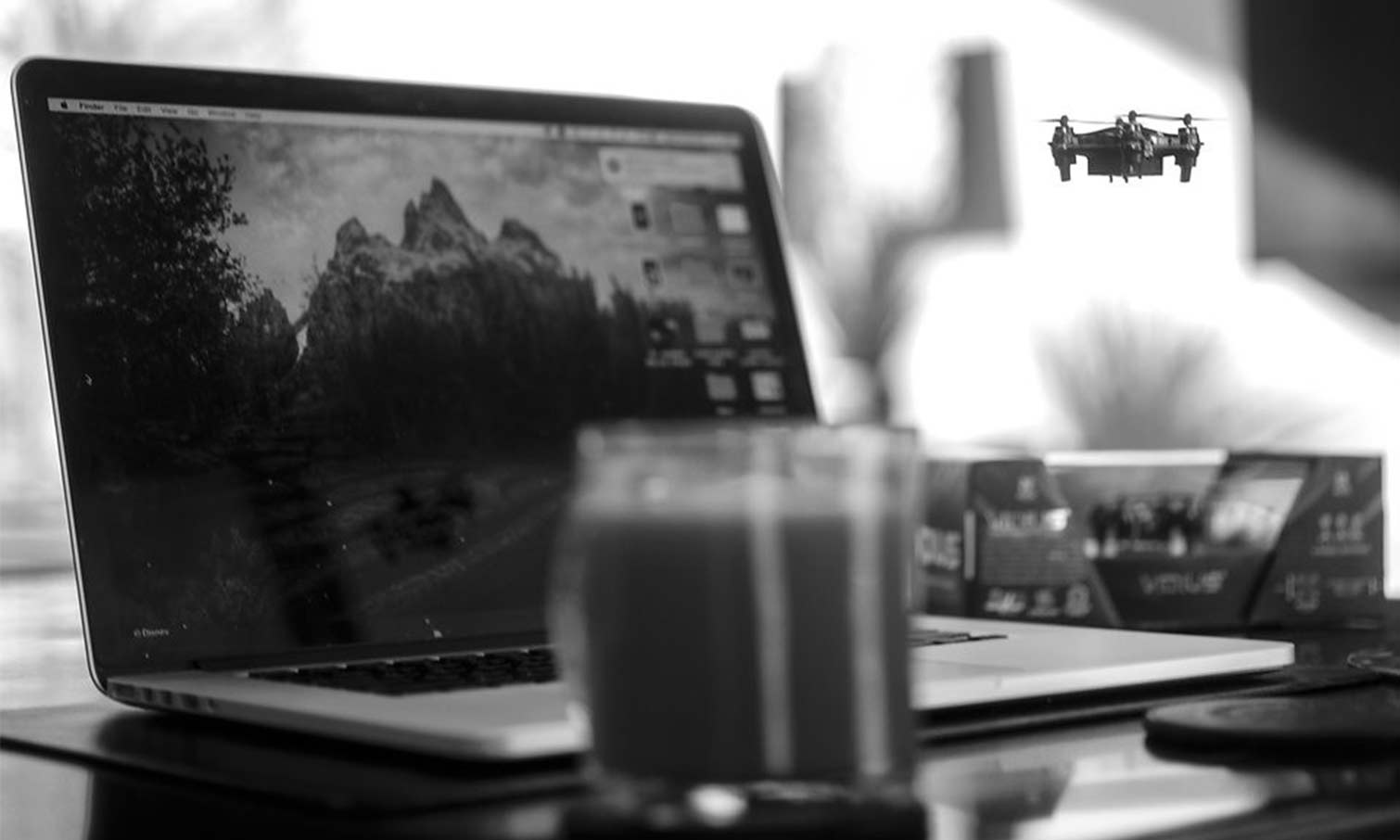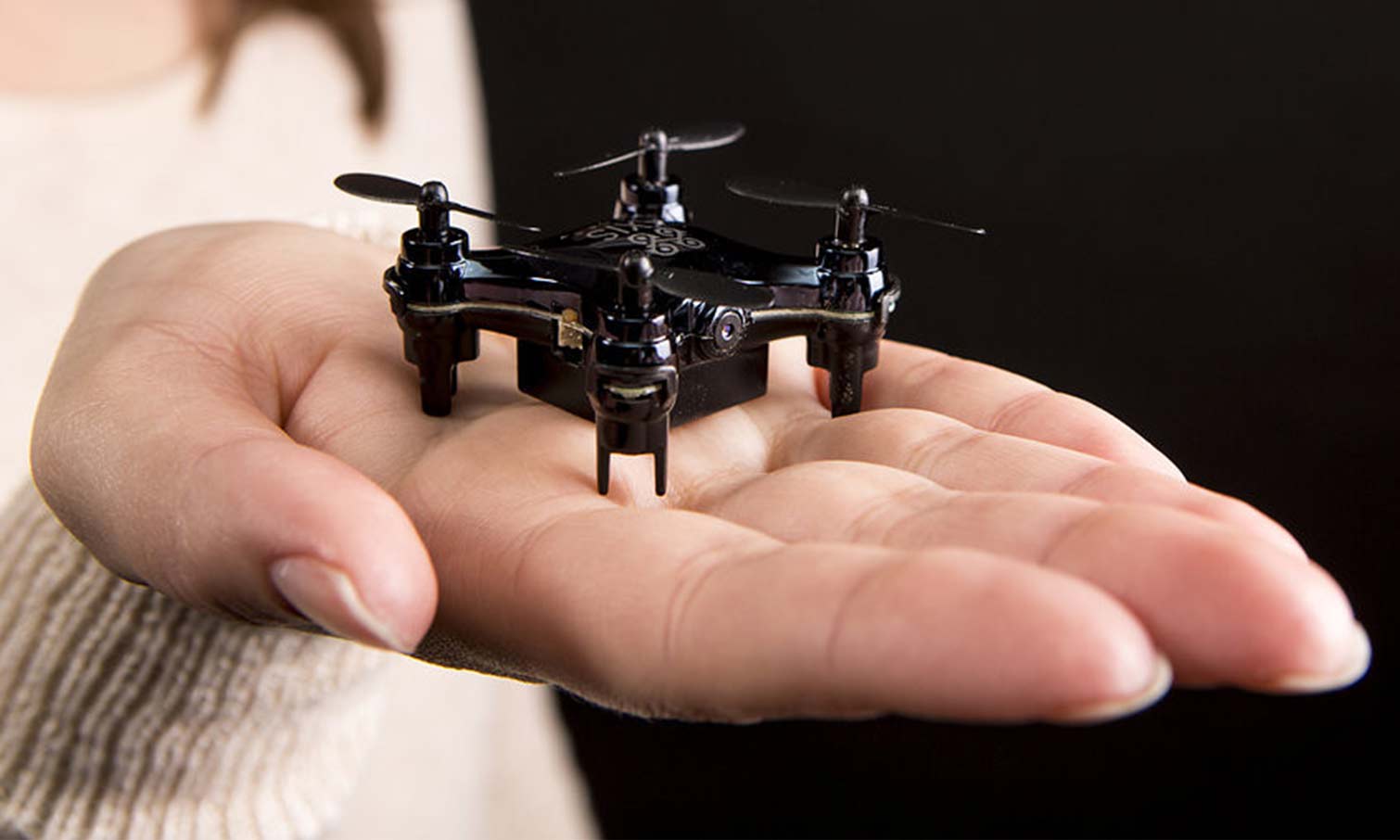Tom's Guide Verdict
The Vidius is a simple and cute drone to fly. Plus, it can shoot low-res video.
Pros
- +
Small and cute design
- +
Flies fast
- +
Smallest video drone available
- +
Can be controlled from a controller or smartphone
Cons
- -
Video is low-res and noisy in low light
- -
Finicky to fly
- -
App is too basic
Why you can trust Tom's Guide
Axis claims the Vidius is the world's smallest drone to offer a first-person view. The Vidius gives you a drone's-eye view by packing both a camera and a Wi-Fi connection into its tiny body. That means you get a fun little drone that can record video while still weighing less than 0.6 ounces. And, at $95 (or $75, if you preorder it before Jan. 29), it is a cheap intro to the world of video drones.
Design
The Vidius is a cute, little drone, measuring just 2.5 x 2.5 inches wide/long (from rotor blade tip to tip) and 1 inch high. It is very light, weighing just 0.57 ounces, meaning you won't have to register it with the Federal Aviation Administration. It's a little bigger and heavier than the tiny Axis Aerius (1.2 x 1.2 x 0.8 inches, 0.25 ounces), which lacks the video feature but is much cheaper ($35).
The frame is made of shiny black plastic, giving it a rather stealthy look. That otherwise covert appearance is spoiled by the bright LED lights on the arms below the rotors, with bright-green LEDs on the front and red ones on the back. These can't be turned off, but they do blink to indicate a low battery or a loss of signal.

The 1-megapixel camera is located on the body of the drone, with the minute lens (smaller than a cellphone camera) poking out from the front of the body. This provides an unimpeded view: You don't see the rotors or the drone itself in the captured video or photos.
Specs
Rotors: 4 (2 blades per rotor) replaceable, 1.2-inch diameter
Battery Size: 150-mAh Li-ion, non-removable
Battery Life: 5/5 minutes (claimed/tested)
Flight Time: 5 minutes
Camera: 480p video, 1-megapixel stills
Smartphone Controlled: Yes, over Wi-Fi with free app
FAA Registration: No
Size: 2.5 by 2.5 by 1 inch
Weight: 0.57 ounces
Controller
There are two ways to control the Vidius: from the included remote or the free app. The app is the easier option, because you get the video preview and access to more controls. It is available for both Android and iOS devices, and allows the user full control. The drone connects to the app via a shared Wi-Fi network that the drone creates (called Axis Vidius Drone). We wish the app were a little more robust, offering social media connectivity and automatic sharing of the incoming video.

When you press the Go Fly! button on the app, the Vidius shows a feed of the video coming from the drone's camera. Overlaid on this are the controls: two virtual control sticks and a number of buttons. These buttons (from left to right) do the following: return you to the start screen, take a photo, start capturing video, show captured video and photos, set gyroscope control, switch to the controller, and reverse the screen.
MORE: The Best Drones and Quadcopters on Any Budget
The left virtual stick controls throttle and rotation, making the drone rise when you pull up and spin when you move it left and right. The right virtual stick controls forward/back and left/right movement. Around these are trim controls that can offset the center point of the sticks if the drone is unbalanced.
The remote control that comes with the Vidius is a very small device, only about twice the size of the drone itself. It fits into my palm, making it feel rather like a giant using a doll's tea set. The remote is controllable, though, if you don't mind your thumbs falling over the two control sticks.

There are minimal controls and switches on the remote unit: two control sticks, a power switch and two trim switches for adjusting the center point of the sticks. You can't control the video features from the controller.
You can, however, alter the flight mode via the remote by pressing in the left stick until it clicks, or put the drone into trick mode by pressing in the right stick. Both of these commands are accompanied by a series of rather loud beeps to let you know that the mode has been changed properly.
A single LED shows when the controller is on and blinks if the connection to the drone is lost or if the batteries on the controller run low. Two AAA batteries that fit under a panel on the rear of the controller power the device. You'll have to bring your own; the Vidius doesn't come with any.
Both the controller and the app connect to the drone over a 2.4-GHz Wi-Fi connection, and this worked out to a distance of about 25 to 35 feet. That's acceptable for a small drone like this, but it would be rather easy to fly it out of range outdoors or in a large room. When this happens, the drone will carry on, flying in whatever direction it was going; it won't stop or return home.
Flying
Like most small drones, the Vidius is a little difficult to fly. Its light weight makes it very easy to lose control of it. Flying requires a light touch, because even a slight movement of either the real or virtual control sticks can send the Vidius spinning away. The system does have a built-in gyroscope that helps to keep the Vidius level, but the drone's small size and light weight make it very prone to tilting or flipping out of control. With some practice, though, it is quite flyable.

Both the app and the remote control offer three flight modes; the main difference among them is the speed of the drone. The 30 Percent mode is for beginners, restricting the drone to slow turns and climbs. The 60 Percent and 100 Percent modes take the training wheels off, allowing the drone to climb and turn much faster.
The 30 Percent mode is definitely the best place for a new flier to start, and this is the default mode for both the app and the controller. In our tests, we found that the Vidius is as zippy as most of the mini drones we have looked at, although the slightly smaller and lighter Axis Aerius is noticeably faster. It is definitely faster than the TRNDlabs Hexa Drone, another small drone.
Flying requires a light touch because even a slight movement of either the real or virtual control sticks can send it spinning away
One interesting trick is the gyroscopic mode. When you activate this mode, you can control the Vidius by moving your phone or tablet. Tip your mobile device forward, and the drone will fly forward. Tilt it to the left, and the drone will follow your lead. It's a neat trick, but again, it requires a careful touch to keep it flying.
The controller also offers a trick mode: Press and hold the right stick and flip the left stick in any direction, and the drone will do a flip in that direction. Don't try this unless you have the drone at least 4 feet off the ground, though; the drone takes a bit of time to recover and ends up a couple of feet lower than where it started. Oddly, the app controller doesn't offer this feature.
Photos and Video
The Vidius' inclusion of a camera is one of the big selling points of this new drone, but the quality of the video is subpar. The problems start with the resolution: The photos are less than 1 megapixel (1100 x 880 pixels), and the video is shot at 420 x 330 pixels.
On anything other than a sunny day, the video turns grainy and flat-looking, which reminded me of a poorly compressed cartoon
The smartphone app that receives the video upscales it to a more common resolution of 720 x 576 pixels (approximately the same as standard definition TV). That makes it easier to share and edit the video, but it also gives images a block, glitchy and rather unappealing look on a higher-resolution screen.
The quality of this captured video is not great, either. It looks OK in bright daylight, but on anything other than a sunny day, the video turns grainy and flat-looking, reminding me of a poorly compressed cartoon. It is also very shaky — there is no image stabilization, so every dip, twist and turn of the drone is captured on video.
Overall, the video and images that this drone captures are much less appealing than those taken by drones such as the $500 Parrot Bebop 2 and the $699 DJI Phantom 3, both of which capture full-HD video and 10-megapixel images. However, those drones are much more expensive.
Captured videos are stored on the controlling smartphone or tablet, not on the drone itself. They can be played back through the app. On the Android app, photos show up in the Android Photos app and on the camera roll, but videos do not. Instead, if you want to share or view them outside the app, you have to dig through the files on the device to find them. (They are located in /root/sdcard/fydrone/videos/.) Most Android apps can't access video files outside of the camera roll.
The iOS app is a bit easier to use. Both photos and videos were added to the camera roll as soon as they were captured, making them ready to be uploaded or shared.
Repairability
The only repairable part on the Vidius is the rotor blades, which you can pop off and replace if they get damaged. They pop off a little too easily, though — I lost a couple of them when the drone crashed onto a hard surface, and the rotor blade popped off and flew away, never to be seen again. There is nothing protecting the rotating blades, so when they hit something, that force has to go somewhere. The Vidius comes with a full set of four rotor blades, and Axis Drones sells a replacement set for $15.
Battery Life
The Vidius includes a small 150-mAh battery that provides a flight time of about 6 minutes. That's pretty typical for this type of small drone; the similar Skeye Hexa and Axis Aerius drones lasted about the same amount of time on a charge. One upside is that it seems that the extra load from the camera and Wi-Fi connection have not adversely affected the battery life.
MORE: What the FAA's Drone Rules Could Mean for You
This battery is not swappable: you can't remove it and replace it. It is charged from a USB port using the included cable — a process that takes about 35 minutes. It can be charged from a wall USB power adapter, but Axis recommends that you use a computer USB port, as it is less likely to deliver too much juice. The USB cable required is a special one: Axis Drones sells a replacement cable for $8.
Bottom Line
The Vidius is a lot of fun, and for $95, you can't really go wrong — as long as you don't expect too much. You get just 5 to 6 minutes of flight time, and video that looks more like a jerky VHS tape than the smooth HD video captured by more expensive drones. If you are looking for attractive video, save your money and buy a Bebop 2. But if you are looking for a cheap, fun drone that can take short videos, the Vidius is a great pick. Once you get a feel for it, the Vidius is a fun drone to fly, and is capable of a good amount of speed and some sharp turns.
Richard Baguley has been working as a technology writer and journalist since 1993. As well as contributing to Tom's Guide, he writes for Cnet, T3, Wired and many other publications.

